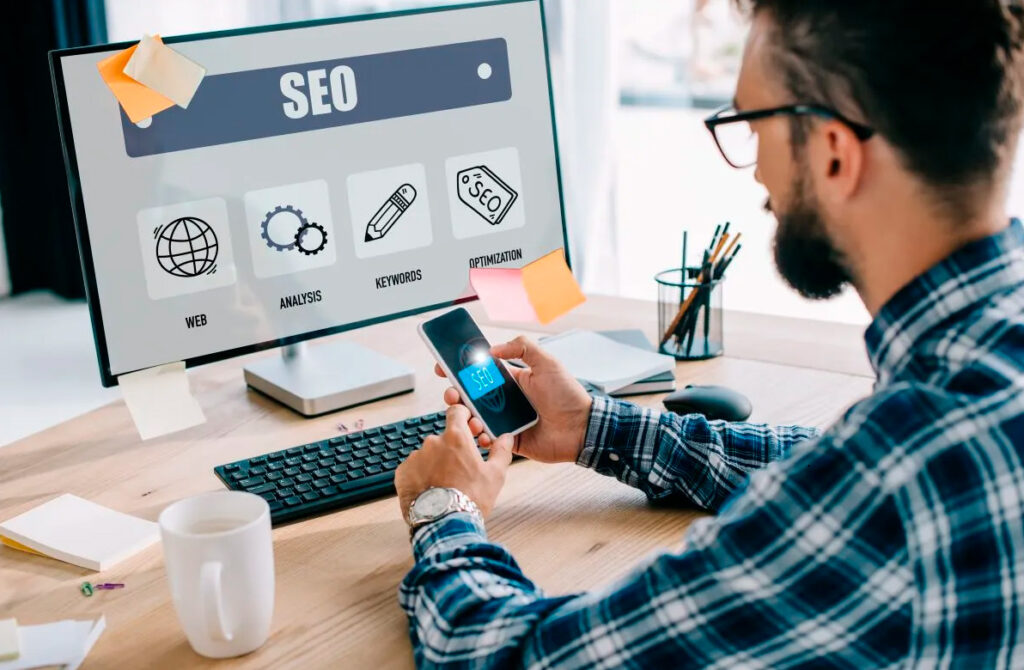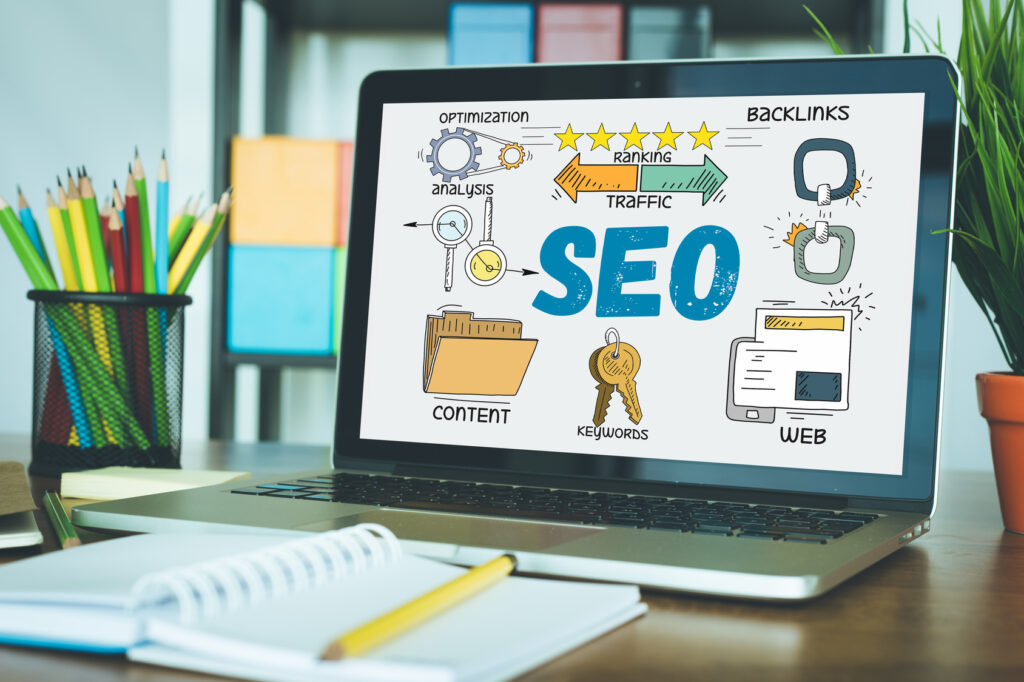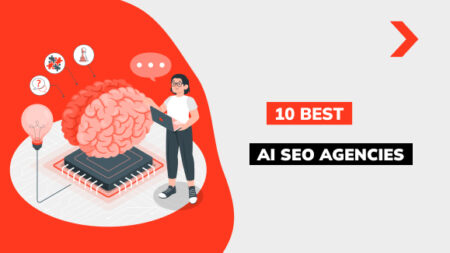The Complete Guide to On-Page SEO
This type of optimization involves a set of measures aimed at improving the content of the site. In practice, search engines have a number of requirements that they tacitly impose on various resources. Focusing on them, you need to do some work.
This should be done if you are interested not only in increasing traffic to your resource but also in improving other equally important parameters. For example, in increasing conversion and, accordingly, profit. For this purpose, various factors will have to be taken into account. Use this SEO checklist to get more information.
Understanding On-Page SEO
On-page SEO, also known as internal SEO, is an optimization process that can be used to increase your Google SERP ranking by tweaking website elements. This process plays an important role in SEO promotion, helping you improve your site’s position and experience of users. After you work through all the points of internal SEO, Google will better understand whether your page meets the expectations of the target audience. Let’s take a closer look at how to do it.

What is On-Page SEO?
On-page SEO (Ukrainian: internal SEO) is a set of actions aimed to optimize content of web pages to increase their positions in organic search. On-Page SEO is the opposite of Off-Page SEO, which focuses a specialist’s efforts on improving the site’s position by taking action outside its boundaries. Internal SEO is about improving the content and HTML code of the page. In addition, On-Page SEO includes:
- improving site loading speed;
- optimization of the mobile version of the site;
- sitemap settings;
- adding micro-marking;
- selection of H1, title and description;
- setting human-readable URLs;
- creation of competent internal links.
On-page SEO focuses on the quality of visible content on the page. The content must meet several requirements for the page to rank highly and be popular among users and social media.
Why is On-Page SEO Important?
SEO is an integral part of today’s digital marketing strategy. It is thanks to it that your site takes the first position in results and attracts traffic. And thereby increasing the number of leads. But this is a complex process that requires a serious and balanced approach, the ability to adapt to changes in search intent, algorithms, and constantly compete for first places in the search results.
On-page SEO is an important part of any SEO strategy. By optimizing your website for engines, you can increase its visibility in results and attract more visitors. For the most part, it is with On-Page SEO that work on the promotion of the resource begins. But they are not limited to him.
On-Page SEO Techniques
Internal optimization of the site – comprehensive work with the resources from the inside, adaptation of the web portal to the requirements of the Google search engine. For effective SEO promotion of the site, it is necessary to optimize meta-tags, anchor text, and visual content, make the correct linking, and take care of the user-friendliness of the resource and search intent. Let’s take a closer look at each of the on-page SEO techniques.
Unique and Valuable Content
Before writing the text for your site, it’s worth doing a little keyword research on the topic of your page. You can do this with free tools like Google Analytics. Once you’ve found the best keywords, take the time to integrate them into the text of your page.
Strategically Target Keywords
Using the right keywords is the best way to show engines that the website content is relevant to specific queries and that users will find answers to their questions on your site. The process of optimizing the content on the site just assumes that the keywords from the user’s request are present in the title, text, or headings of the pages of your site.
Write Compelling Title Tags
The page title tag is what you see as a link you can go to on the results page. The most effective tags are around 50-60 characters long so they can be read on any device. You should include keywords in your title tags as this is the main technical SEO metric used by engines.
Create Click-Worthy Meta Descriptions
The description is a few lines under the title tag on the results page SEO checker. You should write a short sentence describing the content of the page, limited to 155-160 characters. These descriptions should be short and to the point. Search engines take keywords research into account here, but the main goal is to convince the searcher to click on that link.
Structure Your Page with Headings & Subheadings (H1-H6)
Within a web page, content can be divided into headings (H1, H2, H3, etc.) and body text. Search engines give page titles more weight than the rest of the page content. Primary headlines are believed to be more relevant and receive special attention. Therefore, thematic keywords should be included in the H1 headings, and secondary keywords in the H2 and H3 headings.

Optimize URLs for Readability and Relevance
Another important SEO indicator is having a relevant URL (the address at the top of the browser). A well-optimized slug creates the best user experience for site visitors. They need to know where they are and what the page is about, just by reading the URL. And what is good for visitors is also good for Google.
Build a Strong Internal Linking Strategy
You need to organize your website in a way that is easy for both engines and people to navigate. You can achieve this by creating “cover pages” for important topic areas – a cover page provides users with all the basic information about a topic, with internal links to sub-pages that explain aspects in more detail. Clickable alt text should always contain a keyword for that topic.
Utilize External Links to Credible Sources
Linking is especially important for the promotion of web resources with many pages (online stores, other sites with a wide semantic core web vitals). For such projects, it is especially important to ensure the correct distribution of the weight of keywords and phrases on the site. Linking can be done both with the help of special scripts and manually. Search engine robots take into account the weight of only one link, so there is no need to link more than once to one page. If there are more than two links to one page, the weight is transferred, so it is necessary to use hashtags.
Include and Optimize Images
Using images, videos or infographics will not only make your page attractive but can also improve behavioral factors and the overall level of interest of site visitors. Each image should correspond to the content that is placed on the page, complement it, and bring value to site visitors.
Core Elements of On-Page SEO
Regardless of the size or topic of your site, internal SEO is always an important component of a successful SEO strategy. If your site is ranking low in results, traffic is declining, and conversions aren’t improving, it could be a sign that your site needs internal optimization. Let’s see some SEO elements.

Optimize URLs with Keywords
The first step in internal SEO optimization is to identify the right keywords. They help to understand by which queries users will be able to find your site. Based on this structured data, the semantic core of the site is built — around which the entire subsequent structure is built, content is created, and a content marketing strategy is developed.
Craft Effective Page Titles
This is an important element of page code optimization. Based on it, engine rankings understand under which keywords a specific section is promoted. And users see the Title in the results. If this headline interests them, they will come to you, not to your competitors.
Utilize Headers (H1-H6) for Clear Structure
Having a clear site structure makes indexing and user navigation easier. Develop a logical structure of the site with clear sections and subsections. Use text menus and links to make navigation easier. Create sitemaps in HTML and XML formats. Make sure your URLs are properly formatted using keywords and structured data.
Integrate Keywords Naturally within the Content
Content is not only texts. This is everything that is placed on the site: product description, list of characteristics, images, videos. That which provides users with information about products or services. Content should be expert, useful for users, and unique and optimized for engines.
Incorporate Images, Graphics & Visuals
You should also consider using modern image formats like WebP, which provide better compression and quality compared to traditional formats like JPEG or PNG. It is also important to optimize the visual appeal of images and graphics to increase user engagement and reduce bounce rates.
Create Engaging Meta Descriptions
In the description of the page, you need to describe what exactly this article is about, and which questions can be answered here. Here it is also worth focusing on semantics to show the user what he wants to see, this directly affects the likelihood of a click. Often, engines ignore the description if they consider it insufficiently informative for some query in the article and simply display a fragment of text that describes what the user wants to know about.
Optimize Images with Alt Text Descriptions
Of course, images can improve the visual appearance of your site, but that’s not all. Be careful with file names, image alt text, and descriptions. Add your keywords or other information that users might be looking for. After all, images can rank in Google image searches and attract more traffic to your pages.
Build a Strong Internal Linking Network
Internal linking of the site is a powerful tool for optimization. Moreover, it is free. By placing links on different pages within the site, you can correctly distribute the weight, “transfer” users to sections useful for them, and even improve positions in results.
Include Relevant External Links
External links to authoritative resources, such as recognized academic journals or government websites, can significantly increase the credibility of your site and show that your content is based on reliable sources. In addition, the presence of links to authoritative sites can improve the SEO performance of your site, because engines take into account the quality of links when ranking pages. This will help make your text more informative and useful for readers.
Advanced On-Page SEO Tips for Success
In general, there are no clear standards in content optimization. Try, experiment, and be sure to record changes on your site. These recommendations will help promote your site in the TOP search results.
Use Original, High-Quality Images
For better optimization, use original images to avoid duplicate content and copyright issues. You also need to make sure that the images are of high quality and match the content.
Create Comprehensive Content
Your text should be interesting and of high quality. Create deep, informative content so users can find answers to their questions. Use clear and concise language and divide content into sections. This will make it easier for the reader to perceive the information.
Prioritize Page Speed
To improve your experience, optimize your website speed. In this way, you will also improve your ranking in engines. A page load time of 3 seconds or less is ideal.
Optimize Images for Speed
Compress images to reduce file size and improve page speed. Optimize the page to delay the loading of non-essential images.
Rank for Featured Snippets
Your content should answer frequently asked questions concisely and clearly. Use headings, lists, and tables to make it easier for engines to retrieve and display all information as a featured snippet.
Optimize for Voice Search
Your text should be written in a natural language using an appropriate tone of voice. Generate responses to common voice search queries.
Regularly Monitor & Update Content
Regularly monitor website traffic and analytics to identify areas for improvement. For this, use only relevant information.
Enhance Page Speed
Optimize server response time, DNS lookup, and page load time. Use caching and content delivery networks (CDNs) to keep your site responsive.
Featured Snippets
Use heading tags to structure your content and highlight key points. Your content should appear as a featured snippet. So you need to optimise it with Google SERP.
Implement Schema Markup
Schema markup helps engines better understand your website content. So, apply it to a variety of content types, including articles, products, and reviews. This way you will improve the visibility of your site in search results.
How to Boost Rankings and Clicks with On-Page SEO
For self-promotion in SEO to be truly effective, you need to clearly understand what and why you are doing it. Let’s go step by step through each of the stages and consider everything in more detail.

Optimizing Content for Search Engines
One important thing to keep in mind when optimizing your content is that engines now look not only at the specific target keywords on your site but also at the entire semantic cloud of keywords and topics that are included on your site. site
Target Your Keyword Early (Within First 100 Words)
Keywords should be organically included in the content so that you don’t have to add them after writing the text. One way to do this is to identify keywords that are semantically related to the main keyword.
Integrate Keywords Naturally within Headings
Well-optimized page titles should include a relevant keyword at the beginning followed by the brand name. Including your brand name in your headlines also helps build your brand’s credibility.
Maintain Optimal Keyword Density
Don’t go overboard trying to add multiple keywords for SEO purposes, overuse will make the URLs less useful and may trigger spam filters.
Utilize External Links Strategically
By using such links strategically and ethically, you can increase your website’s performance and drive targeted organic traffic.
Craft SEO-Friendly URLs
Put yourself in the user’s mind and look at your URL. If you can easily and accurately predict the optimise content you expect to find on the page, your URLs are appropriately descriptive.
On-Page User Experience (UX) Signals
UX is now essential to organic linking (SEO), which is no longer limited to traditional metrics. The relationship between SEO and UX has become crucial to guarantee site visibility and user satisfaction. Let’s discover together the SEO factors that directly affect user interaction.
Prioritize Valuable Content Above the Fold
Use the most important and relevant information at the top of the page. This ensures that users can quickly see the main message, purpose, and value of the page, increasing engagement and reducing bounce rates.
Break Down Content into Manageable Chunks
This signal recommends breaking large blocks of content into smaller, manageable chunks to make it easier for users to absorb and remember the information.
Foster an Active and Engaged Community
This signal encourages the creation of an active and interesting target audience, encouraging users to participate and interact.
Optimizing for Click-Through Rate (CTR)
When searching for the information they need on engines, users are increasingly evaluating results based on their titles, descriptions, and other attributes that flash on the results page. These “tiny pieces” of information, called snippets, play an ever-present role in what pages the end user chooses to view.
Together with the use of micro-markup, snippets acquire a value that can increase the click-through rate of pages and increase the Click-Through Rate (CTR) – the very percentage of users who go to your resource from results. Let’s take a closer look at how to optimize conversion rates.
Craft Intriguing Question-Based Title Tags
Use question-based title tags. This can increase curiosity and encourage users to answer questions.
Fill In Missing Meta Descriptions
Meta descriptions provide a brief description of a page’s content and are often displayed in search results. Filling in missing descriptions can increase the relevance and accuracy of results, resulting in higher CTRs.
Utilize Review or FAQ Schema Markup
Using FAQ schema markup can help highlight important information and increase your page’s visibility in results.
Inject Emotion into Title Tags for Appeal
Use emotional language in your title tags. This will help create an emotional connection with users and increase the likelihood that they will interact on the site.
Add the Current Year to Titles & Descriptions
Include the current year in your title and description tags. In this way, users will understand that your content is relevant and this will increase the visibility of your page in results.
FAQ
What is onsite search engine optimization?
Internal optimization is a set of activities carried out inside the site to ensure compliance of the web resource with the requirements of SEO. Sites that are positively evaluated by the PS receive high positions in the results of the issue and as a result, more visitors.
Do I need SEO on every page?
It is generally a good idea to optimize every page of your website for engines, as this can help improve your visibility and drive more organic traffic. However, the degree of SEO optimization can vary depending on factors such as the purpose of the page, its target audience, and your overall SEO strategy.
Why is on-page optimization important for a website?
SEO is the process of improving the internal and external aspects of a website or web page to improve its visibility in engine results. This process involves editing the HTML code of the website and its content. Thanks to this, the site audit has become more adapted to the engine, which increases its importance on the Internet.
What is the most important factor for on-page SEO?
These are mainly keywords, platform structure, and links. Despite all the innovations, these parameters are still the key factors of promotion. For successful SEO, you need to understand how the SEO ranks sites.





